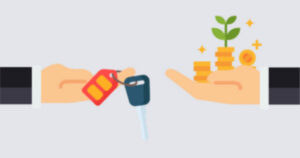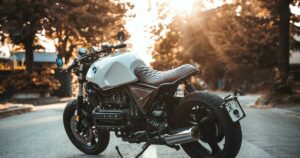Without a doubt, we all like to think that we’re good drivers. However, many of us have picked up dangerous driving habits that we constantly do without even realising. Concentration is crucially important when you’re on the road and just one small mistake can have a serious impact, potentially causing an accident whether this is big or small. It’s important to stay focused when on the road, so pay attention, be aware of your surroundings as well as other drivers.
Check out our list of dangerous driving habits below and some tips on how you can break them:
1. SPEEDING
Speeding is something that probably almost all of us at some point in our lives have been guilty of before. Whether you’re running late for work or you’re late for an appointment, speed limits are there for a reason and if you choose to break these, you’re reducing your ability to control your vehicle. Driving over the speed limit means that you’ll have less time to react to any sudden changes on the road and it will also increase your required stopping distance. In bad weather conditions, it’s even more important that you abide by the speed limit and accommodate your driving habits when road surfaces are wet and slippery.
So, to help avoid speeding, try and avoid being late where possible, be aware of the rules of the road and always obey the speed limit, as speeding within a residential area or school zone is incredibly dangerous. Make sure that you acknowledge the speed limits, don’t ignore them and ensure that you adjust your speed accordingly.
2. DRIVING UNDER THE INFLUENCE
Driving under the influence, whether you’re under the influence of alcohol or drugs, can impair your driving ability, causing reduced vision as well as reaction time and could potentially cause you to have an accident. The majority of us enjoy a good drink and like to wind down from time to time, but it’s much more enjoyable to do this without having to worry about the responsibility of driving.
In order to avoid driving under the influence, try to switch up the designated driver role, allowing everybody to have a chance to unwind. If you notice that others around you are under the influence, to ensure that they don’t drive, perhaps take away their keys to protect them. Also, beware of other road users and keep an eye out for those who may be displaying signs that they are under the influence such as, swerving or hugging the centre line. If you know that you’re going to be drinking or that there is a possibility you could be, don’t take your vehicle with you and ensure that you find alternative transport.
3. TEXTING
With technology continuously evolving, it’s easy to get distracted by your mobile phone while you’re driving. Whether this be texting, taking a phone call or checking your social media, checking your phone puts you at risk of swerving on the road and therefore causing a collision. Distracted driving is taking over and mobile phones are causing a huge distraction, with many car manufacturers now offering voice-activated features to allow the driver to remain focused on the road ahead.
Concentration is vital while you’re driving and you should always remain focused on the road ahead. When driving you should try and limit any potential distractions or even perhaps switch off your phone in an attempt to avoid temptation while driving. Although, if you do decide to keep your phone on, make sure that it’s hands-free if you need to take a phone call and although this may still cause you a distraction, this is legal.
4. DRIVING WITHOUT A SEATBELT
Despite whether you’re going for a long journey or short, it’s vital that you wear your seatbelt as in the event of a collision, your seatbelt can save your life. Preventing you from being ejected from your vehicle, your seatbelt is there to keep you safe on the road. Wearing a seatbelt can really help to reduce or prevent any injuries that may be caused as a result of an accident and these days, many vehicles are now equipped with seatbelt alarms, which continue to beep until front-seat passengers buckle up.
So, before you set off, always remember to buckle up. Seatbelts are designed to save lives and are not simply there just for decoration. Make sure you and your passengers are wearing your seatbelts and ensure that you wear them the proper way, across your hips and over your collarbone, at all times.
5. DRIVING TIRED
If you attempt to drive while tired, this can have similar effects as drink driving, resulting in slower reaction times and can deter your driving ability. Perhaps you’ve had a long day at work and feel exhausted and you may find yourself slowly falling asleep behind the wheel, which can be fatal. If you feel as though your too tired, don’t drive, as if you do, you’ll not only be putting yourself at risk but also others on the road. Drinking caffeine may be the answer to this, however, it will not keep you energized for long and the effect of the caffeine will eventually wear off.
If you find yourself feeling drowsy and tired, take a break, have a coffee or perhaps even have someone pick you up if possible. You could also crack open the window or listen to some music to help to reduce the risk of you potentially falling asleep. So, to help yourself avoid feeling drowsy while you’re driving, make sure that you have a good night’s sleep, schedule regular rest breaks into your journey and if you feel as though you beginning to feel drowsy, pull over to a safe area and take a short nap.


















































